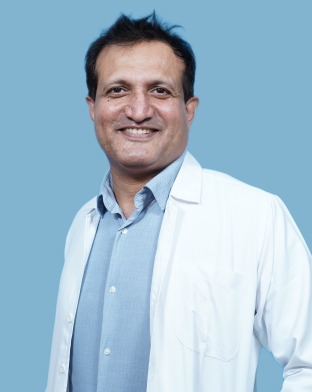DBS vs Medication vs Non-Invasive Brain Stimulation: Which One Fits You?

Medicine made simple summary
For conditions like Parkinson’s disease, essential tremor, depression, and OCD, treatment choices include medication, deep brain stimulation (DBS), or non-invasive brain stimulation methods like TMS (transcranial magnetic stimulation). Medications are usually the first step, but they may not work forever or may cause side effects. DBS is a surgical option where electrodes deliver controlled pulses inside the brain, while non-invasive options like TMS use magnetic or electrical fields applied outside the skull. This guide breaks down the differences so patients and families can understand which treatment may fit best.
Introduction: Why compare these treatments?
Patients facing neurological or psychiatric conditions often wonder which treatment is right for them. Medicines are familiar and usually tried first, but they may lose effectiveness or cause troublesome side effects. DBS offers a surgical solution for certain patients, while non-invasive brain stimulation (NIBS) methods like TMS offer a middle ground. Understanding the strengths, weaknesses, and uses of each approach is crucial to making an informed decision.
Step 1: What are medications and how do they work?
Medications remain the first line of treatment for most neurological and psychiatric disorders. For Parkinson’s disease, levodopa helps replace lost dopamine. For depression, SSRIs increase serotonin. For anxiety, benzodiazepines calm excessive brain activity. The advantage of medication is accessibility—it is easy to prescribe and adjust. But medications also have downsides.
Over time, Parkinson’s patients may develop motor fluctuations and involuntary movements. Antidepressants may stop working or cause weight gain and sexual side effects. Anxiety drugs may lead to dependence. Medicines are powerful but not always sufficient.
Step 2: What is Deep Brain Stimulation (DBS)?
DBS is a surgical technique where electrodes are placed into specific brain regions and connected to a pulse generator implanted in the chest. The generator sends electrical pulses to normalize abnormal brain signals. DBS has been proven for Parkinson’s disease, essential tremor, and dystonia.
It is also being studied for psychiatric conditions like OCD and depression. Unlike medication, DBS acts directly on circuits rather than changing brain chemistry. It is adjustable and reversible, allowing doctors to fine-tune treatment over time. DBS is considered when medications are no longer effective or tolerated.
Step 3: What is Non-Invasive Brain Stimulation (NIBS)?
NIBS includes techniques like Transcranial Magnetic Stimulation (TMS) and Transcranial Direct Current Stimulation (tDCS). TMS uses magnetic fields placed outside the skull to activate brain areas. It is FDA-approved for depression and OCD. tDCS delivers weak electrical currents through scalp electrodes and is mostly used in research. NIBS is painless, does not require surgery, and can be repeated in outpatient settings. However, its effects are usually weaker than DBS and may require multiple sessions for benefit.
DBS vs Medication: Key comparisons
Effectiveness: Medications are effective in early disease, while DBS is reserved for later stages when symptoms are uncontrolled.
Side effects: Medications may cause drug-related side effects; DBS carries surgical risks but fewer drug side effects long term.
Long-term outcomes: DBS can provide stable benefit for years, while medications may lose effect over time.
DBS vs Non-Invasive Stimulation: Key comparisons
DBS requires surgery but provides stronger and longer-lasting effects. NIBS is non-surgical, safer, and easier to access but usually less powerful. DBS is for severe, treatment-resistant cases. NIBS may be tried earlier, especially in psychiatric disorders. DBS is expensive upfront, while NIBS involves repeated costs.
Medication vs Non-Invasive Stimulation: Key comparisons
Medications are first-line and widely available. NIBS is often used when medicines fail or cause side effects. Medications work systemically, affecting the whole brain, while NIBS targets specific regions. NIBS usually has fewer systemic side effects, making it attractive for patients intolerant to drugs.
Myths vs Facts
Myth: DBS is brain surgery that changes who you are.
Fact: DBS adjusts brain activity but does not erase personality.
Myth: Medications always stop working eventually.
Fact: Many patients benefit long-term with adjustments.
Myth: NIBS is just experimental.
Fact: TMS is FDA-approved for depression and OCD.
Who might fit which treatment?
Early Parkinson’s patients benefit from medication. When fluctuations and complications appear, DBS may be considered. Patients with depression often start with medicines. If treatment-resistant, TMS may be tried, and in extreme cases, DBS may be considered. The choice depends on stage, severity, and patient preference.
Risks and safety considerations
Medications: side effects include weight changes, sleep issues, or dependency. DBS: surgical risks include bleeding, infection, or hardware failure. NIBS: mild headaches, scalp discomfort, or rarely seizures in TMS. Each has risks, but safety improves when treatments are performed in experienced centers.
Cost and accessibility
Medication: lower upfront cost but ongoing expenses. DBS: high surgical cost but long-term stability may reduce medicine use. NIBS: moderate cost, but multiple sessions required. Access also varies by region—medicines are widely available, DBS requires specialized centers, and NIBS is increasingly available in clinics.
Future directions
Adaptive DBS that senses brain activity and adjusts stimulation automatically is in development. Portable home-based NIBS devices are being researched. New medications aim to reduce side effects and provide more targeted benefits. The future may see combined approaches, where patients use medicines, DBS, and NIBS in sequence.
No single treatment is best for everyone. Medications are first-line, DBS is powerful for resistant cases, and NIBS offers a safe, non-surgical alternative. Choosing the right option depends on disease stage, symptom type, and patient goals.
Conclusion
If you or a loved one are weighing treatment options like medication, DBS, or non-invasive brain stimulation, speak with a neurologist or psychiatrist. Ask about the pros, cons, and whether you might qualify for advanced treatments. The right choice depends on your unique journey.















